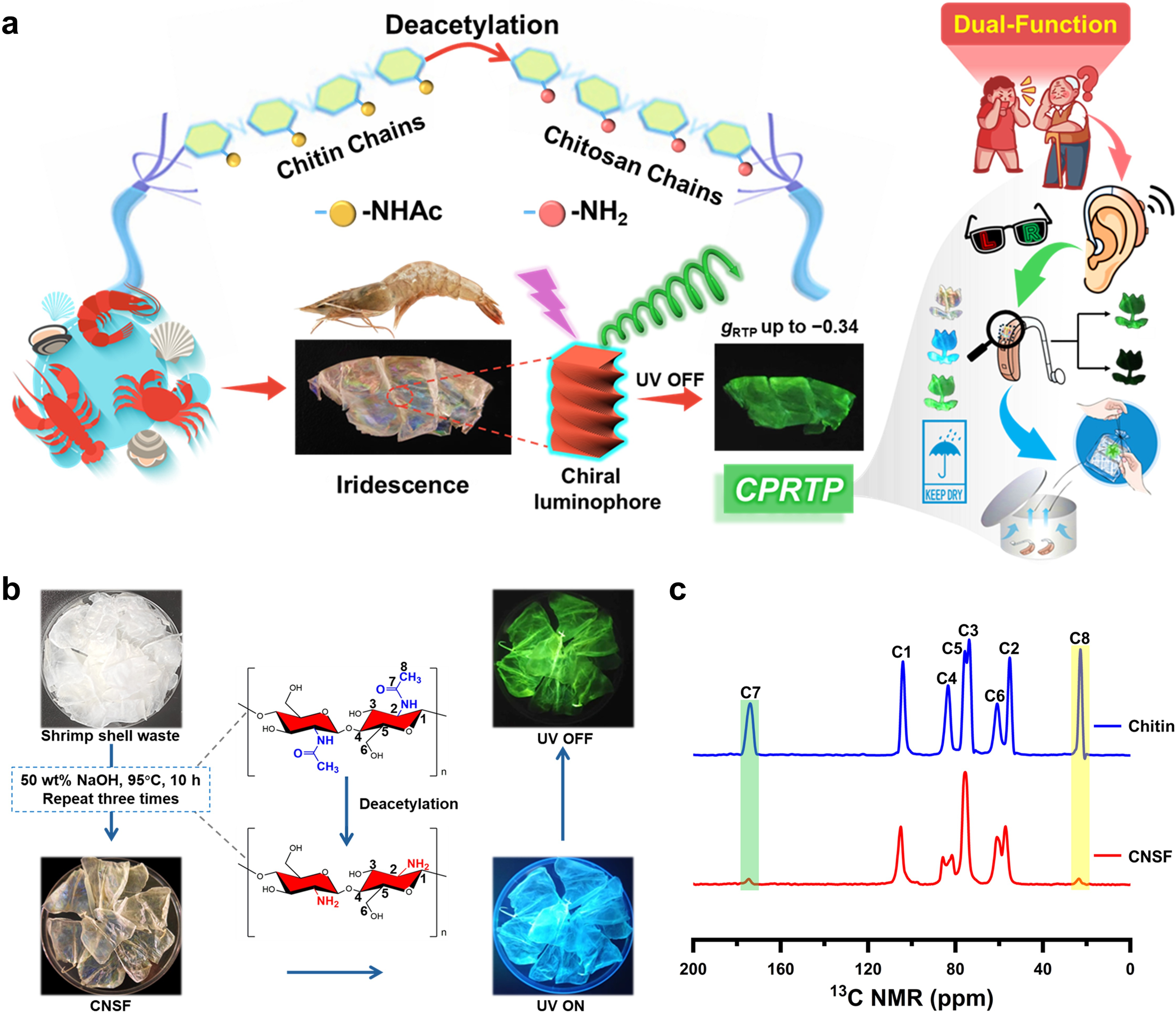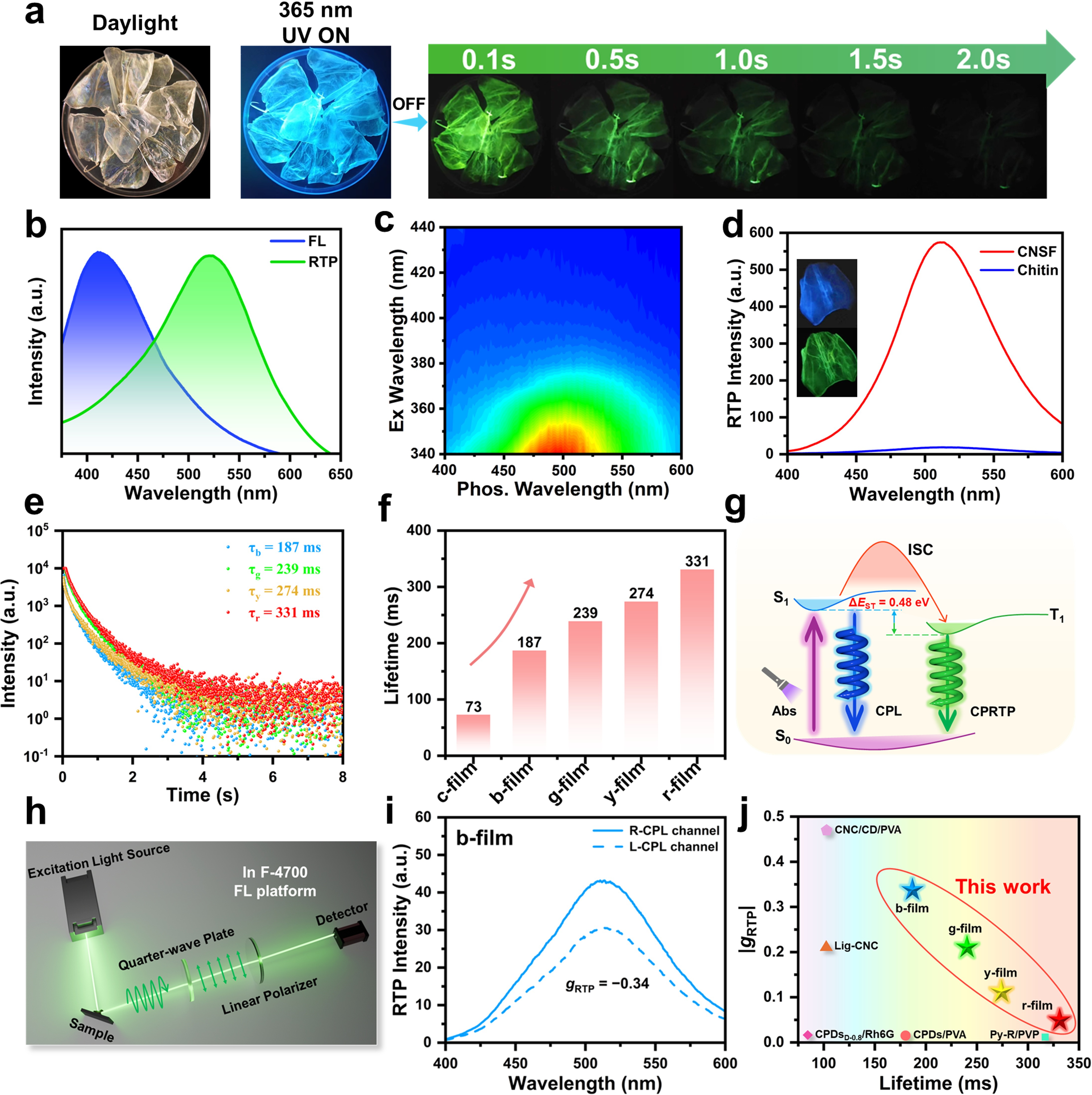Top-down approach for easy processing, cost-effective, biodegradable chiral photonic materials with spontaneous circularly polarized room-temperature phosphorescence activity
Time:2025-02-22 13:48 Author:
Hao Wang, Yi Qian, Qiongya Li, Yuchan Liu, Haijuan Qin, Zece Zhu, Wei Li, Fusheng Zhang*, and Guangyan Qing*
Chemical Engineering Journal, 2025, DOI: 10.1016/j.cej.2025.160357
https://doi.org/10.1016/j.cej.2025.160357
Developing biomass resources as precursors for circularly polarized room-temperature phosphorescence (CPRTP) is a promising avenue in chiral sciences and photonic technologies. However, converting these renewable materials into CPRTP matrices traditionally requires complex processing and exogenous luminophores. Herein, we introduce a novel “top-down” approach for directly processing naturally abundant chitin-derived resources into CPRTP films, eliminating the need for external luminescent additives. Shrimp shells, characterized by a layered structure of chitin fibers, undergo an efficient deproteinization-demineralization-deacetylation process to yield photonic chitosan films. The resulting nanostructured films exhibit left-handed chiral nematic structures and enhanced molecular chain rigidity, resulting in right-handed CPRTP emission with high dissymmetric factors up to −0.34 and remarkably long lifetimes up to 331 ms. Notably, this system demonstrates excellent flexibility, exceptional biodegradability, satisfactory structural stability, and a reversible humidity-responsive CPRTP effect. Our innovative processing strategy is validated by using other chitin-derived resources, such as crabs and lobsters, showcasing the broad applicability of chiral photonic chitosan for CPRTP emission. Furthermore, we propose a proof of concept for dual-function CPRTP humidity-monitoring and anti-counterfeiting labels, ensuring the stability and functionality of hearing aids in diverse and challenging environments. Our findings significantly advance the design and diversity of sustainable CPRTP materials.

